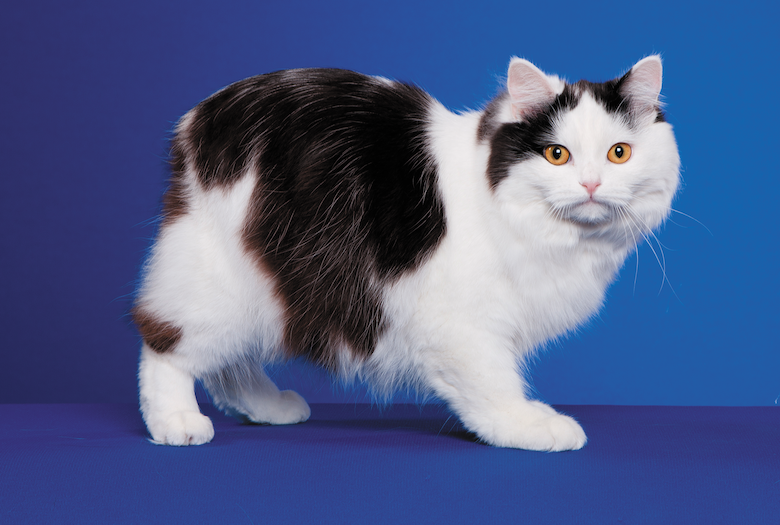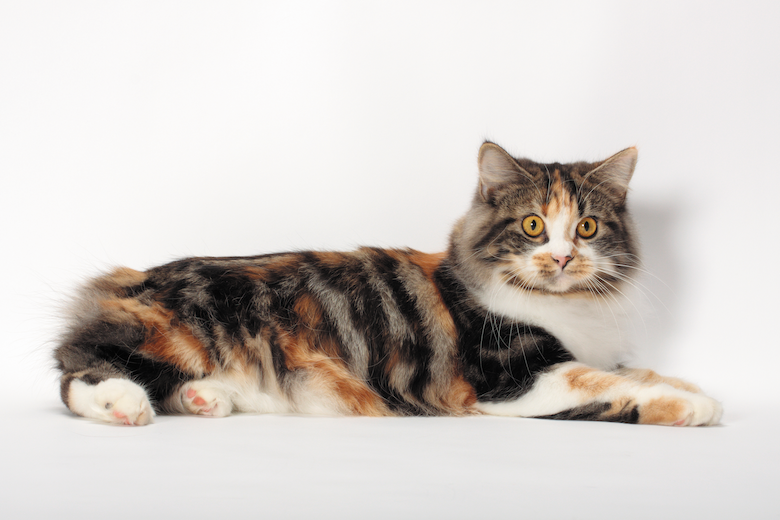Tails Not Required: The Cymric
The post Tails Not Required: The Cymric by Stacy Hackett appeared first on Catster. Copying over entire articles infringes on copyright laws. You may not be aware of it, but all of these articles were assigned, contracted and paid for, so they aren't considered public domain. However, we appreciate that you like the article and would love it if you continued sharing just the first paragraph of an article, then linking out to the rest of the piece on Catster.com.
Legend has it that the Cymric and its short-haired cousin, the Manx, lost their tails when they strolled onto Noah’s ark late one evening as the rain started falling. Noah, of course, was in a hurry, and as he rushed to seal up the ark, the cats’ tails were caught by the door.
More likely, the trademark lack of tail shared by the Cymric and the Manx can be attributed to a genetic mutation that caused the trait. Because the cats were isolated on their native Isle of Man, the trait was passed down to subsequent generations.
Did you know? Cymric is pronounced kim-rick.
The Isle of Man is located in the Irish Sea not far from England or Ireland, and the tailless cats made their way to the United Kingdom where the short-haired variety (the Manx) became one of the first breeds shown in the cat fancy. In the mid-1970s, several breeders began to exclusively breed the long-haired tailless cats that sometimes arrived in litters, and by 1976 the Cymric was accepted for championship status by the Canadian Cat Association. Today the breed enjoys championship status in most major cat associations.
Rumpies, stumpies and risers
It’s not hard to see why the Cymric wins over cat-loving fans, both in the cat fancy and in family homes. The strong, compact body combined with an arched back gives the cat an overall appearance of roundness. “No other cat in the cat fancy has the combination of heavy body, dense coat, strong head and ear set within such a compact package,” says Catherine Roso, a breeder in Alaska. “Some people call them bowling balls with smiles.”
And of course, there’s the matter of the Cymric’s tail — or lack thereof. The cat’s tail can come in several lengths, which breeders refer to by the following nicknames:
Rumpy: completely tailless, with no detectable tail protrusion
Stumpy: small stump of a tail
Rumpy riser: small tail that will stand up when the cat’s rump is stroked
The Cymric also can have a half tail or full tail, and can come in every combination of color and pattern except pointed patterns. The length of the cat’s coat is what sets the Cymric apart from its Manx cousin. Catherine explains that the Cymric’s fur can range in length from “slightly shaggy” short hair (½ inch in length) to fur like that of a Siberian (2½ inches in length). “Show-quality Cymric have a semi-longhaired double coat, ¾ to 1½ inches long with a shorter, softer undercoat,” she adds.
Regular grooming keeps the Cymric looking his best. Catherine recommends brushing the cat at least once a week. For Cymrics with longer coats, more frequent brushing may be necessary, anywhere from two to five times a week. Pay attention to the area around the rump, as the lack of tail can result in a dirty backside. Finally, Catherine recommends petting the cat frequently to help remove loose hair.

Photo: Preston Smith Photography
Effortless grace
Most likely the Cymric will welcome the petting (and probably the brushing). “Cymrics make it clear that they are all about people,” Catherine says. “My cats will follow me anywhere, including out the door to shovel snow!”
The breed shares its affection with all members of the family, including other pets and visitors to the house. Catherine describes the Cymric as friendly, loyal and devoted. The cat will meet you at the door, jump up in your lap as soon as you sit down, and rub against you as you try to read the paper or work on your laptop. Don’t be surprised if the Cymric tries to snuggle with you under the covers as well!
While snuggling tops the list of his favorite activities, the Cymric also loves to play. The cat’s strong legs support his love of jumping and climbing — and racing through the house. Get two or more Cymrics together in one room, and you may see them tearing down halls and around corners, their coats flowing behind them.

Photo: Tetsu Yamazaki
The intelligent cats may work together to open doors and investigate other mysteries in the house, as their curiosity leads them to learn every nook and cranny in their environments. Still, this exploration rarely leads the breed into trouble.
When playtime is over, the Cymric will happily return to quiet time with his family members. To let their people know it’s time to snuggle, the cat may softly meow or trill, but overall, the breed is on the quiet side. The Cymric’s gentle voice reflects his overall sweet, gentle personality.
Beautiful, strong and sweet, the breed makes a wonderful addition to any home. Catherine sums up the Cymric this way: “Endearing to look at, charming to hold and a pleasure to own.”
The post Tails Not Required: The Cymric by Stacy Hackett appeared first on Catster. Copying over entire articles infringes on copyright laws. You may not be aware of it, but all of these articles were assigned, contracted and paid for, so they aren't considered public domain. However, we appreciate that you like the article and would love it if you continued sharing just the first paragraph of an article, then linking out to the rest of the piece on Catster.com.




Post a Comment